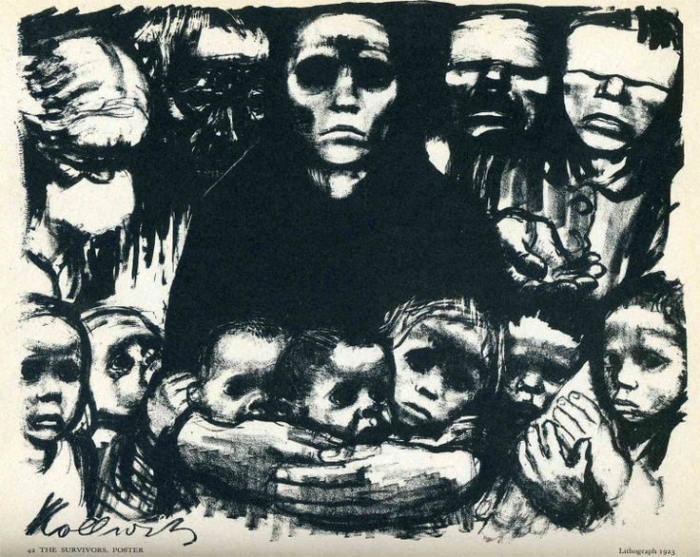Kathe Kollwitz, although born in the 1800's was a very progressive German artist. She worked in many mediums including painting, printmaking, and sculpture. Her work is heartrending. She was creating work that was well before it's time.
She began to study art at a young age because her father recognized her abilities. She wasn't able to go to the better art schools because girls weren't allowed in them at the time. She attended an art school for women in Berlin. She began working in the arts - more in the commercial aspects- when she was just 12 years old. She was engaged by the time she was 17. Her husband was a doctor and he helped care for the poor. I think because they lived so near his practice and saw so much of the deprivation and sickness, that that was a huge influence on her troubling and tragic artwork. She was a socialist and very much felt the disparate nature of the class system that was creating such extreme poverty. the violence and tragedy that surrounded her in the following years was largely the subject of all the work she created. She liked to focus on hope and tragedy, triumph and doom. The polar human condition, especially in the lower classes of pre-first world war Germany. One of her sons died in World War I, and through her grieving process she created the plans for a monument. It was called The Grieving Parents. Once again, just looking at it is harrowing. She had such a painfully beautiful way of portraying heartbreak and hardship.
 |
| Never Again War |
Her work after the war was a continuous outlet for her feelings on war and loss. She joined a movement against the Nazi party and when they came into power, almost all her work was removed from museums and she was warned that she would be sent to a concentration camp. That never happened because she was too well known in the world for her art. Her other son died in WWII and her husband died of illness during the war. Her house was bombed during the war and there were many artworks that were lost because of it. During this time almost all the work she made had the word "death" in the title. One of her sculptures was used by the Nazi party in their propaganda- I can't imagine how painful this must have been for her.
I'm so impressed by this woman. Her fortitude, strength, forward-thinking, and determination is unbelievable. She created beauty out of such unbelievable loss and heartache. Her work will haunt my heart, but in a healing way.
 |
| Darkness and Light |


Comments
Post a Comment